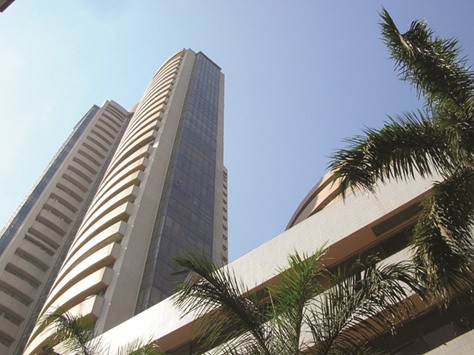Advances in health-care and consumer companies helped India’s benchmark stock gauge end two days of losses in volatile trading even as renewed concerns of rising bad loans weighed on state-owned lenders. Drugmaker Lupin was the best performer on the S&P BSE Sensex, rebounding from a 9% drop in the past two sessions. Cigarette maker ITC, Hindustan Unilever and Asian Paints led consumer companies higher. Bank of Baroda slumped the most since January 2015 after its first-quarter earnings slumped 60% as provisioning for soured debt increased. State Bank of India was the biggest decliner on the index. The Sensex added 0.3% at the close, after fluctuating between a gain of 0.5% and a loss of 0.3%. The gauge has struggled to hold on to a one-year high reached last week amid an uneven recovery in corporate profitability and the highest valuations in 15 months. Ten of the 20 companies on the index that have reported June-quarter results, have disappointed investors. “Investors are trying to hide in defensive sectors like pharma and consumers after the sharp rally,” AK Prabhakar, head of research at IDBI Capital Market Services, said by phone. “The bounce is temporary. We expect stocks to decline starting next week.” The Sensex has rebounded 21% from a low reached in February as capital flows to India accelerated amid a wave of global policy easing. The measure trades at 16.2 times projected 12-month profits, near the highest since April 2015. A gauge of emerging market is valued at a multiple of 12.5. Foreigners have bought a net $5.3bn of local shares this year, the most after Taiwan and South Korea. They’ve been net buyers of local shares every month since March. Lupin climbed 2.3%, paring this month’s loss to 9%. ITC added 2.1%, ending three days of losses, while Hindustan Unilever rose 1.2%. Bank of Baroda tumbled 9%. Net income fell to Rs4.23bn ($63mn) in the June quarter from a year earlier. Provisions for soured credit more than tripled to Rs19.8bn, as its bad-loan ratio climbed to 11.2% from 10% as of March, the filing showed. State Bank of India fell 1.9%.
Meanwhile, the rupee declined the most in a week on concern demand for local assets is waning after strong rallies in the nation’s stocks and bonds.
The rupee weakened 0.2%, the most since August 3, to 66.8450 a dollar in Mumbai, prices from local banks compiled by Bloomberg show. The Indian currency has gained 0.2% this month, after rising 0.8% in July in its biggest monthly advance since March.

The Bombay Stock Exchange building. The Sensex added 0.3% at the close yesterday, after fluctuating between a gain of 0.5% and a loss of 0.3%.
